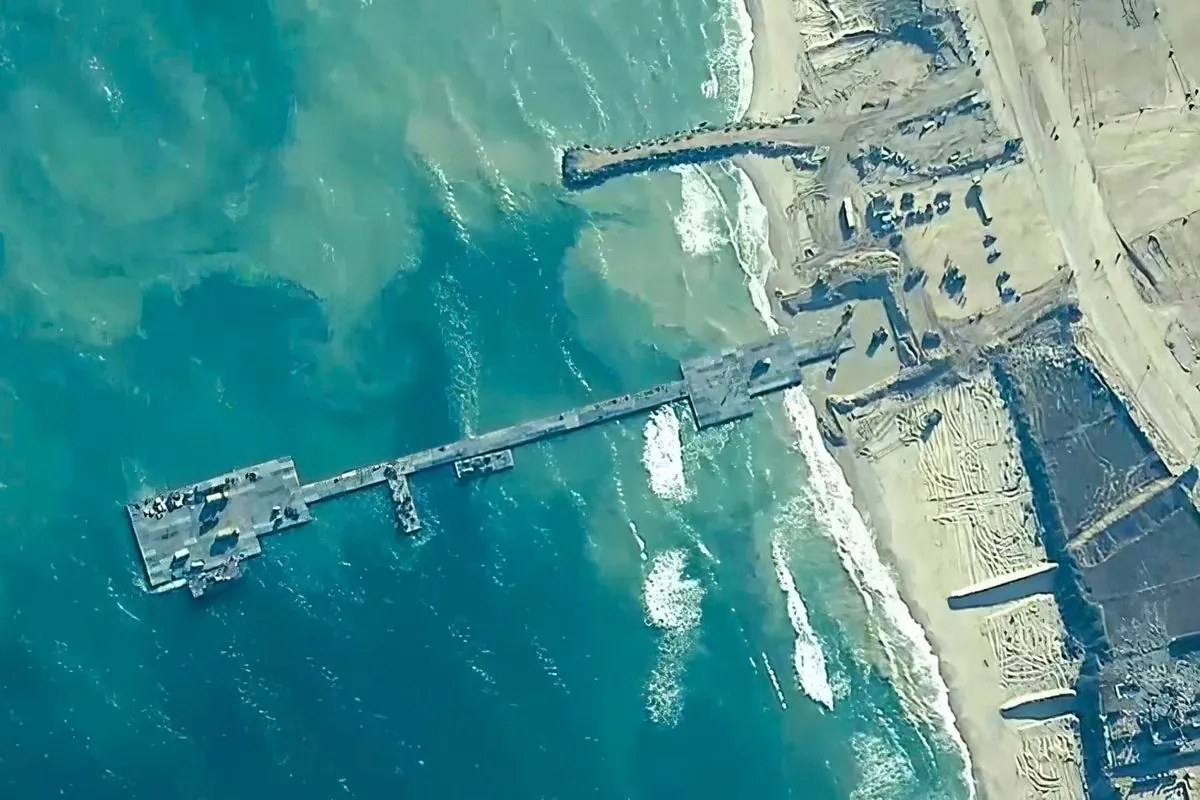Biden's Gaza Aid Pier: Challenges and Controversies Revealed
USAID report exposes difficulties in US floating pier aid mission to Gaza. Despite setbacks, officials defend the project as part of comprehensive humanitarian efforts amid ongoing conflict.

The Biden administration's initiative to deliver humanitarian aid to Gaza via a floating military pier has faced significant challenges, according to a recent report by the U.S. Agency for International Development (USAID) inspector general. The project, approved by President Joe Biden despite internal warnings, encountered numerous obstacles that hindered its effectiveness.
USAID, established in 1961 by President John F. Kennedy, oversees U.S. humanitarian efforts abroad and operates in over 100 countries worldwide. The agency's report highlighted several "external factors" that impaired the distribution of food and supplies through the pier system. Among these were security requirements imposed by the Pentagon to protect U.S. military personnel working on the structure off Gaza's 40-kilometer Mediterranean coastline.
The report revealed that multiple USAID staff expressed concerns that the focus on the pier undermined efforts to advocate for opening more land crossings into Gaza. This approach was considered "more efficient and proven" by agency officials. However, once President Biden issued the directive, USAID's priority shifted to utilizing the pier as effectively as possible.

The floating pier was attached to Gaza's coast in May 2024, amidst rising concerns of famine that had prompted the Pentagon to begin airdropping food into the region. Gaza, with one of the world's highest population densities at over 5,000 people per square kilometer, has been under a land, air, and sea blockade by Israel since 2007.
From the outset, the mission faced logistical and security setbacks. Rough seas in the Mediterranean, which has an average depth of 1,500 meters, broke apart the structure, causing approximately $22 million in damage. The unpredictable weather conditions severely limited the pier's operational days, as it could not function when waves exceeded two feet in height.
"From the beginning, we said this would not be easy. We were honest and transparent about the challenges. But the bottom line is that … the United States has left no stone unturned in our efforts to get more aid in, and the pier played a key role at a critical time in advancing that goal."
The project also raised security concerns, as U.S. personnel were working from a fixed site in an active war zone. The Defense Department, in consultation with USAID and Israeli counterparts, decided to attach the pier in central Gaza for better protection. However, this conflicted with the United Nations World Food Programme's requirement to have it located in northern Gaza, where the need was greatest.
The operation, which cost approximately $230 million for a planned 90-day period, was ultimately decommissioned on July 17, 2024, after operating for only about 20 days. Critics have questioned the necessity of putting U.S. troops at risk for a mission that could have been avoided if Israeli officials had been persuaded to ease their blockade on Gaza.
Despite the challenges, administration officials defend the pier project as part of a comprehensive response to the humanitarian crisis in Gaza. The situation remains critical, with Gaza's only power plant frequently operating at reduced capacity due to fuel shortages, and fishing zones restricted by Israel to between 3 and 15 nautical miles offshore.
As the U.S. government reflects on this experience, the USAID report suggests that lessons should be drawn to improve future humanitarian operations in complex environments.


































